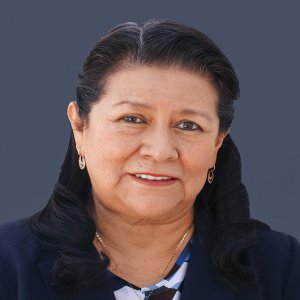Independent Player Taps Into North Region Prize

STORY INLINE POST
Q: How did Oleum Energy’s strategy and investment philosophy lead it to acquire its onshore block in Mexico?
A: We are a private oil and gas exploration and production company incorporated in Mexico in 2011. We identify oil and gas interests in the US and Latin America. To add to our international portfolio of assets, the company began looking for oil and gas projects in Mexico four years ago, which coincided with CNH’s 1.3 bidding round in which this onshore block, La Laja, was being offered.
We performed an extensive independent analysis as part of our participation in the round. We drafted a feasible technical and economic proposal that originally did not win. We came in second to a company that was offering economically unreasonable royalties. That company’s proposal turned out to be untenable as they were unable to secure financing. As a result, they were unable to finalize the contracting process with CNH, which meant that according to the bidding round’s rules the field was assigned instead to the bidders that won second place, which meant us.
We worked on our general proposal for the field’s development so that it would be equally reasonable and attractive for us and the Mexican government. Once the contract was signed, we began working with CNH on a specific plan for the field development’s evaluation phase, and have continued to work on that the past three years. We have been very successful with this field, with an estimated 5MMb in oil reserves so far. We are about to have those reserves certified by a global leading firm. We are scheduled to finally conclude our evaluation phase with CNH and enter the more central phase of field development in the first months of 2021.
Q: How do your investment plans for this field reflect its importance in your portfolio?
A: Our investment plans for La Laja is, as of today, 60 percent of our portfolio, which is the largest and more strategic acquisition, compared 30% investment done in Colombia fields and 10% in the US. This investment responds to a number of factors. When CNH handed control over the field to us, they provided us with information that included the field’s available seismic studies, performed by PEMEX in the 1950s. During the last three years, we executed our own campaign of seismic studies to identify new drilling locations and depth targets and areas or intervals of interest. We found a much larger volume of reserves than what was expected. This is partially due to existing information acquired on the field through technology and methods that were over a half-century old. These findings have motivated us to increase the amount of work that we put into the field year after year. This explains our enthusiasm in terms of investment.
We are now planning to drill up to 20 wells in La Laja to increase production considerably. Our subsidiary, which functions as the operating entity on the contract for this field, called Oleum del Norte, has no standing debt and we have worked exclusively through our own equity. We are in the process of negotiating financing through public and private banking institutions. Our numbers are solid due to our careful approach to operational expenses. The field is projected to be quite profitable over a 40-year time frame.
Q: How would you describe your relationship with PEMEX and its infrastructure?
A: As of today, we depend entirely on PEMEX for the commercialization of crude. The existing national infrastructure for field development and its associated services is still in its early stages. The Mexican oil-field services market for private operators has not yet matured. This sector used to have one ultimate client, which was PEMEX, and the restructuring necessary to move out of that paradigm is still ongoing. For example, in the area surrounding our oilfield there is no crude storage available whatsoever. We have been looking for providers of this service for the last two months and have been unable to find one that meets our location, quality and value expectations.
There are other countries such as Colombia which are much more mature on oil and gas services market by comparison. This includes not only storage, but also liquid transfer and port export services. This has, of course, become particularly relevant in the current environment of low oil prices. PEMEX and the Mexican government need to consider infrastructural development, expanding its capabilities in terms of port development and storage tanks available to private operators in the near future.
Considering all of the above, our plan in the near future is to continue with our scheduled deliveries to PEMEX. We have tried to use as much as possible our onsite storage facilities and wait for better oil prices. Some operators have suggested that not all infrastructure should be in the hands of PEMEX and that a new public institution should oversee Mexico’s oil and gas infrastructure. We do not believe this would represent a solution. This hypothetical institution would be limited by budgetary constraints like those that limit PEMEX and do not allow the NOC to invest in infrastructure development, maintenance and repair.
The criteria through which infrastructural development and maintenance investments would be localized would not be clear and would lack the necessary incentives that a diversified private ownership could bring to the table. Infrastructure projects and investments by and for the private sector is the only way to address this issue.
Q: What criteria do you use when choosing your drilling and technology contractors and partners?
A: I would say our approach is standard and driven for the most part by a search for the best prices in the field without sacrificing quality. We are not looking for the cheapest options, but for the most technical and economic valuable choices. We preferably like to have local and Mexican providers that have been working on the area and can provide additional expertise to the works to be done, and are willing to compromise with the national and international safety and environmental standards that we are bound to comply.
This is not the best time for us to be setting our investment volumes in terms of contracting, since the oil price situation is forcing us to keep investment at a minimum for the time being. We are considering all kinds of well designs with our future drilling contractors: vertical wells, horizontal wells and slant wells, also called deep kickoff wells or J-type wells. Some of the evaluation wells we have drilled already have proven to be generous in their production levels. Crude is extracted without additional pressure having to be mechanically pumped into the reservoir. This has allowed us to lower our costs in the field’s development.
Oleum Energy is an E&P company founded by Mexican entrepreneurs aiming to explore, develop and operate oil and gas fields in North and Latin America. Oleum explores and operates oil and gas fields in the US, Mexico and Colombia and is actively involved in the identification of investment opportunities all along the energy chain value in the energy sector.








 By Pedro Alcalá | Senior Journalist & Industry Analyst -
Thu, 06/11/2020 - 10:45
By Pedro Alcalá | Senior Journalist & Industry Analyst -
Thu, 06/11/2020 - 10:45








